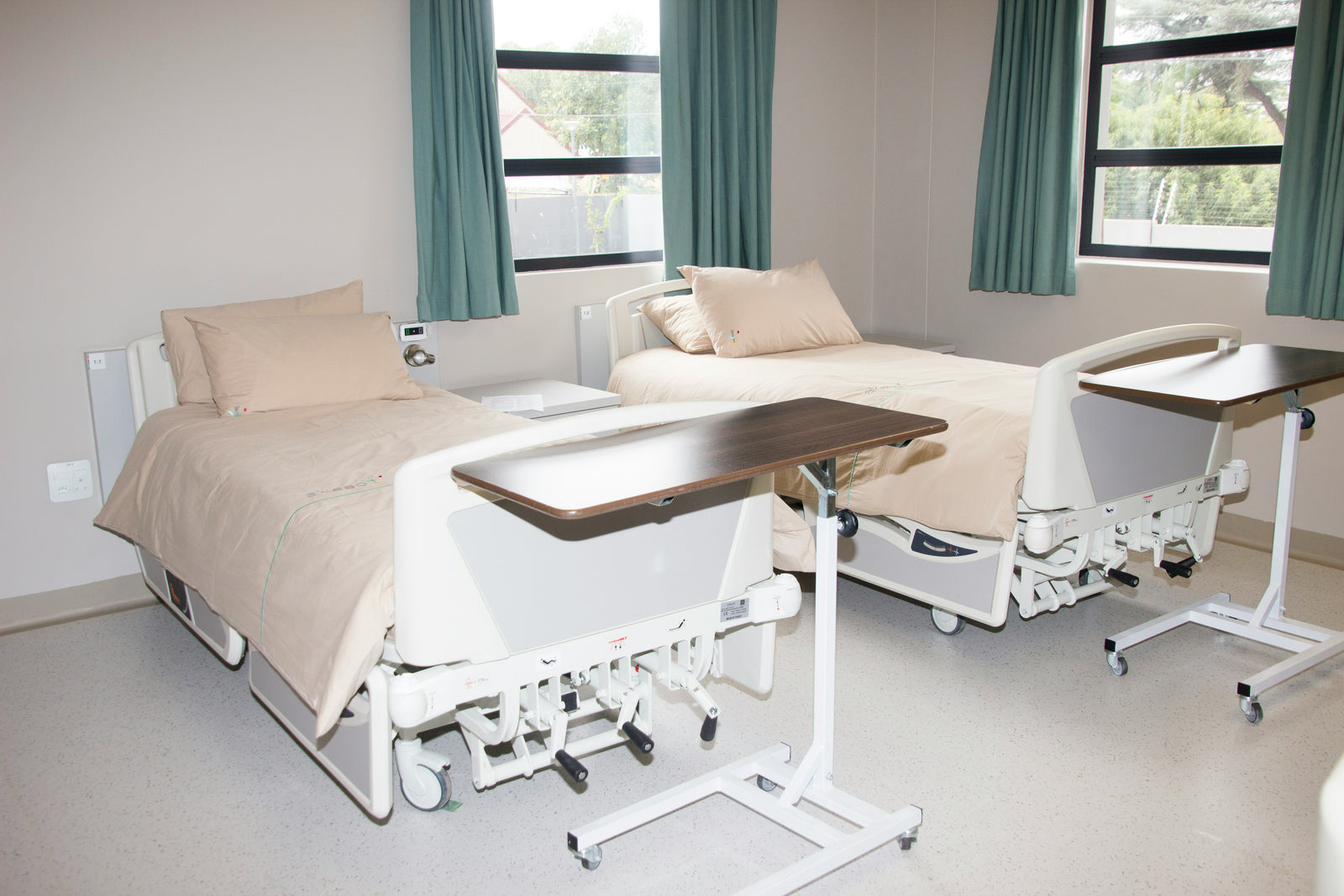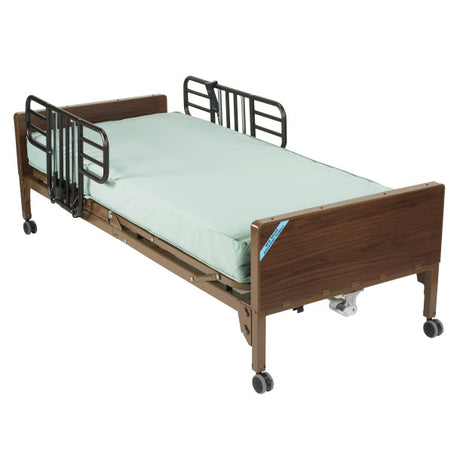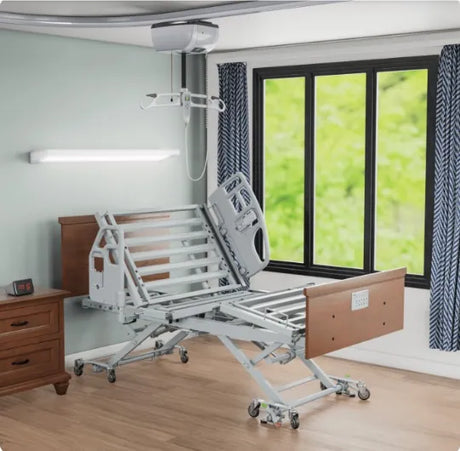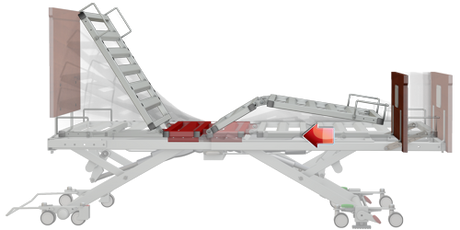As the population ages and more people require long-term care at home, the need for hospital beds in residential settings has increased. Hospital beds provide comfort, support, and safety for individuals with medical conditions or disabilities. However, choosing the right hospital bed for home use can be a daunting task. There are many factors to consider, such as the individual's medical needs, available space in the home, and budget constraints. In this article, we will discuss how to choose a hospital bed for home use, including the different types of hospital beds available, key features to look for, and tips for purchasing the right bed for your needs.
Types of Hospital Beds
There are several types of hospital beds available for home use, each with its own unique features and benefits. The most common types of hospital beds include manual, semi-electric, and full-electric beds.
- Manual Hospital Beds: Manual hospital beds are the most basic type of hospital bed and are operated manually by turning a crank to adjust the head, foot, and height of the bed. These beds are typically more affordable than electric beds but may require more effort to adjust.
- Semi-Electric Hospital Beds: Semi-electric hospital beds have electric controls to adjust the head and foot of the bed, but the height must be adjusted manually. These beds offer a good balance of affordability and convenience.
- Full-Electric Hospital Beds: Full-electric hospital beds have electric controls to adjust the head, foot, and height of the bed. These beds are the most convenient option but are also the most expensive.

Key Features to Look For
When choosing a hospital bed for home use, there are several key features to consider to ensure the individual's comfort, safety, and well-being. Some important features to look for include:
- Height Adjustment: The height of the bed should be adjustable to allow for easy entry and exit from the bed and to accommodate caregivers.
- Side Rails: Side rails can provide added safety and security for individuals at risk of falling out of bed.
- Mattress Options: There are a variety of mattress options available, including foam, air, and gel mattresses, each offering different levels of support and comfort.
- Weight Capacity: It is important to choose a hospital bed with a weight capacity that can accommodate the individual's needs.
- Mobility Features: Some hospital beds come with mobility features such as wheels or locking mechanisms to make it easier to move the bed or keep it in place.
Tips for Purchasing a Hospital Bed
Purchasing a hospital bed for home use can be a significant investment, so it is important to do your research and consider all of your options before making a decision. Here are some tips for purchasing a hospital bed for home use:
- Consult with a Healthcare Professional: Before purchasing a hospital bed, consult with a healthcare professional, such as a doctor or physical therapist, to determine the individual's specific needs and requirements.
- Measure Your Space: Hospital beds come in a variety of sizes, so make sure to measure the available space in your home to ensure the bed will fit comfortably.
- Consider Your Budget: Hospital beds can vary widely in price, so it is important to consider your budget and explore financing options if needed.
- Test the Bed: If possible, test out the hospital bed before making a purchase to ensure it meets the individual's comfort and support needs.
- Read Reviews: Before purchasing a hospital bed, read reviews from other customers to learn about their experiences with the bed and manufacturer.
Conclusion:
In conclusion, choosing a hospital bed for home use requires careful consideration of the individual's needs, available space, and budget constraints. By understanding the different types of hospital beds available, key features to look for, and tips for purchasing the right bed, you can select a hospital bed that provides comfort, support, and safety for you or your loved one. Remember to consult with a healthcare professional, measure your space, consider your budget, test the bed, and read reviews before making a final decision. With the right hospital bed, you can ensure a safe and comfortable living environment for those in need of long-term care at home.
Faqs
Q: What are some key considerations when selecting a hospital bed for home use?
A: Some key considerations when selecting a hospital bed for home use include the patient's medical condition and mobility needs, available space in the home, desired features and functionalities, ease of use for both the patient and caregiver, and budget constraints.
Q: What types of hospital beds are available for home use?
A: There are several types of hospital beds available for home use, including manual beds, semi-electric beds, and fully electric beds. Manual beds are operated using hand cranks, while semi-electric beds have electric controls for adjusting the head and foot positions but require manual adjustment for height. Fully electric beds offer electric controls for all adjustments, including height, head, and foot positions.
Q: What features should I look for in a hospital bed for home use?
A: Some features to consider when choosing a hospital bed for home use include adjustable height to facilitate easier transfers and caregiving, adjustable head and foot positions for improved comfort and positioning, side rails for safety and fall prevention, and mattress options designed for pressure relief and support.
Q: How do I ensure the hospital bed fits in my home?
A: Before purchasing a hospital bed for home use, it's important to measure the available space in the room where the bed will be placed to ensure it fits comfortably. Consider factors such as clearance around the bed for maneuvering, access to electrical outlets for powered beds, and any obstacles that may need to be removed or relocated.
Q: Can I try out a hospital bed before purchasing it for home use?
A: Some medical equipment suppliers or healthcare providers may offer the opportunity to test out hospital beds before making a purchase. Additionally, you can inquire about return or exchange policies to ensure you have the option to make adjustments if the bed doesn't meet your needs or expectations.







